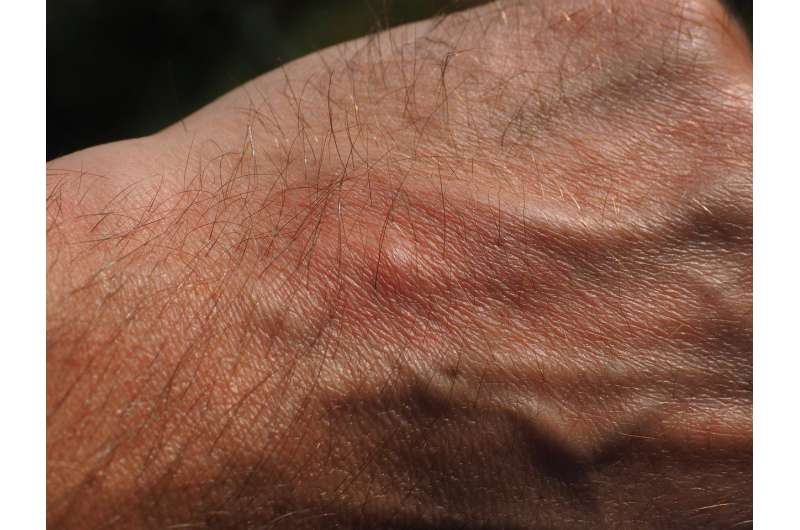How allergens trigger itching: Finding points to new targets for allergy drug development

A key step in the immune system's response to allergens has been uncovered by researchers at Massachusetts General Hospital (MGH). They have shown that a neuropeptide called Substance P is released by certain neurons in the skin when they detect allergens, and that this substance is essential in the development of allergen-induced immune responses. This research could lead to the development of new and better methods to treat and prevent allergies.
How allergens are detected by the immune system had not been known. "The focus has been on dendritic cells and T cells, which play a major role both in allergies and in protecting the body from pathogens, such as viruses, bacteria or fungi," says Caroline Sokol, MD, Ph.D., investigator at MGH's Center for Immunology and Inflammatory Diseases and lead author of the study, which appears in Immunity. "Now we know that sensory nerves link allergen exposure to immune activation."
While the steps in the immune system's response to pathogens are well understood, there has been less certainty about how that system responds to allergens, such as pollen, dust mites or animal fur. Dendritic cells activate T cells that are necessary for that immune response, but until now, scientists did not know all the steps from exposure to an allergen to the development of itching. Sokol's team has filled in a key blank in that process.
"Allergy-triggering dendritic cells are located next to allergen-responsive neurons in the skin. We found that when exposed to an allergen, these neurons release Substance P," says Sokol. "Substance P then directly induces migration of those dendritic cells to the lymph nodes, where they, in turn, activate T cells. Those T cells then marshal the attack against the allergen invader." Those allergic-response triggering dendritic cells are called CD301b+ DCs.
Sokol and her colleagues studied this chain of events in both isolated cells and living systems. "We saw that something was happening in living systems that doesn't happen in cultured dendritic cells," Sokol explains. "So we hypothesized that in living systems there must be some intermediate step between exposure to the allergen and activation of the dendritic cells."
Their experiments support that idea. First, they showed that sensory neurons detect allergens both in isolated cells and in mice. Next they demonstrated that CD301b+ dendritic cells can be found close to sensory neurons in the skin. Taken together, these findings suggested that sensory neurons play a major role in immune cell activation in response to allergens.
Further studies demonstrated that by chemically blocking allergy-sensing neurons in mice, the researchers could interrupt the activation of an allergic response. They also showed that Substance P is released by allergen-activated neurons in both cultured cells and living systems and that Substance P, on its own, can activate the specific types of dendritic cells needed to in turn activate the T cells and complete the allergic response. Further, they showed that blocking sensory neuron function inhibited the activation of T cells associated with the allergic response.
This breakthrough discovery not only broadens understanding of the immune system, but also opens new avenues for the development of therapies to treat allergies. "This sensory-neuron-dependent pathway, and Substance P, are necessary to trigger an immune response to allergens," says Sokol. "If we can interrupt that we can possibly stop the allergic immune response."
More information: Caroline Perner et al, Substance P Release by Sensory Neurons Triggers Dendritic Cell Migration and Initiates the Type-2 Immune Response to Allergens, Immunity (2020). DOI: 10.1016/j.immuni.2020.10.001




















